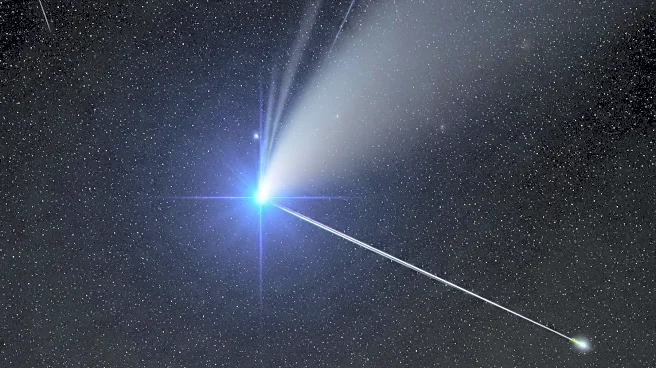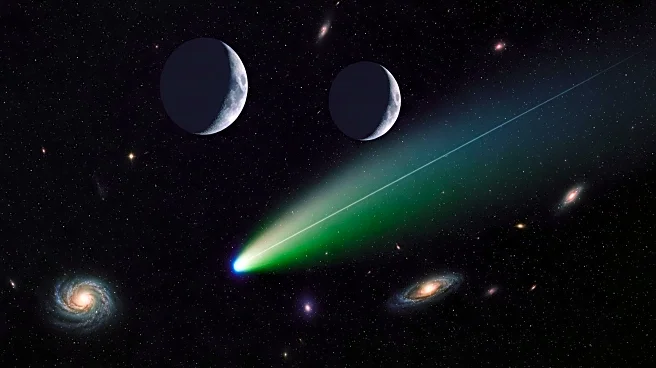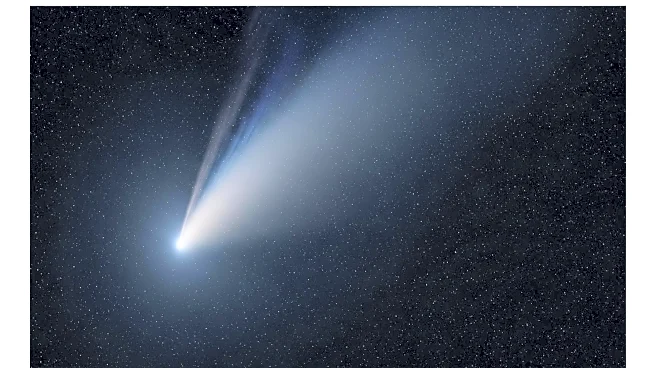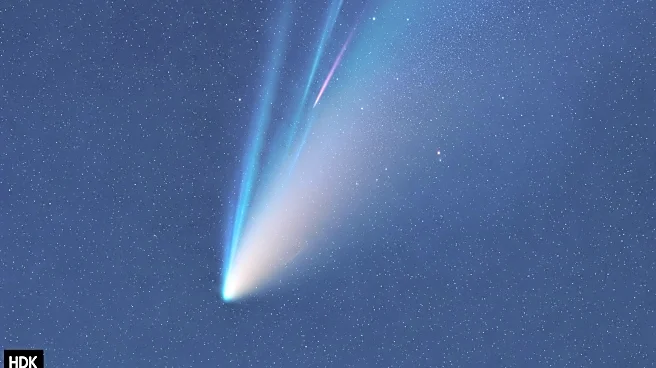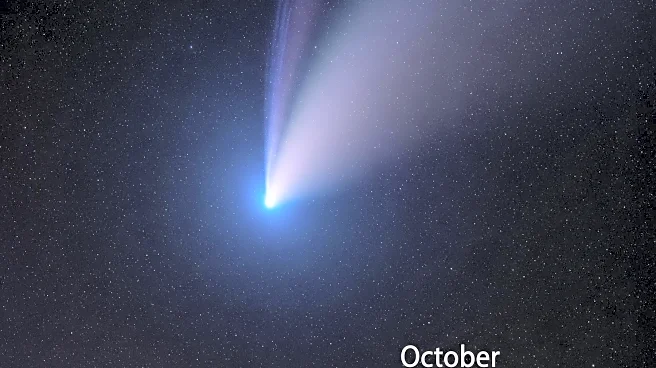What's Happening?
Comet C/2025 A6 (Lemmon) is approaching Earth and has significantly brightened since its discovery in January. Initially observed with a magnitude of +21.5, it has now reached a magnitude of +7, raising hopes that it may become visible to the naked eye from dark sky locations. The comet is set to make its closest approach to Earth on October 21, passing approximately 55 million miles away, before reaching its closest point to the Sun on November 8. Astrophotographers have captured stunning images of the comet, showcasing its bright nucleus and ion tails.
Why It's Important?
The brightening of Comet C/2025 A6 (Lemmon) presents a rare opportunity for both amateur and professional astronomers to observe a celestial event that could be visible without telescopes. This event highlights the dynamic nature of comets and their unpredictable behavior as they interact with solar radiation. The visibility of the comet could inspire public interest in astronomy and provide educational opportunities for schools and science enthusiasts. Additionally, the data collected from observations can contribute to the understanding of cometary compositions and their trajectories.
What's Next?
As Comet C/2025 A6 (Lemmon) continues its journey, astronomers will monitor its brightness and trajectory closely. The comet's visibility will depend on its continued brightening and the clarity of the night sky. Observatories and amateur astronomers are likely to continue capturing images and data, which will be analyzed to understand the comet's behavior and structure. The comet's passage may also lead to increased public engagement with astronomy, with potential viewing events organized by observatories and science centers.

